Your Cart is Empty
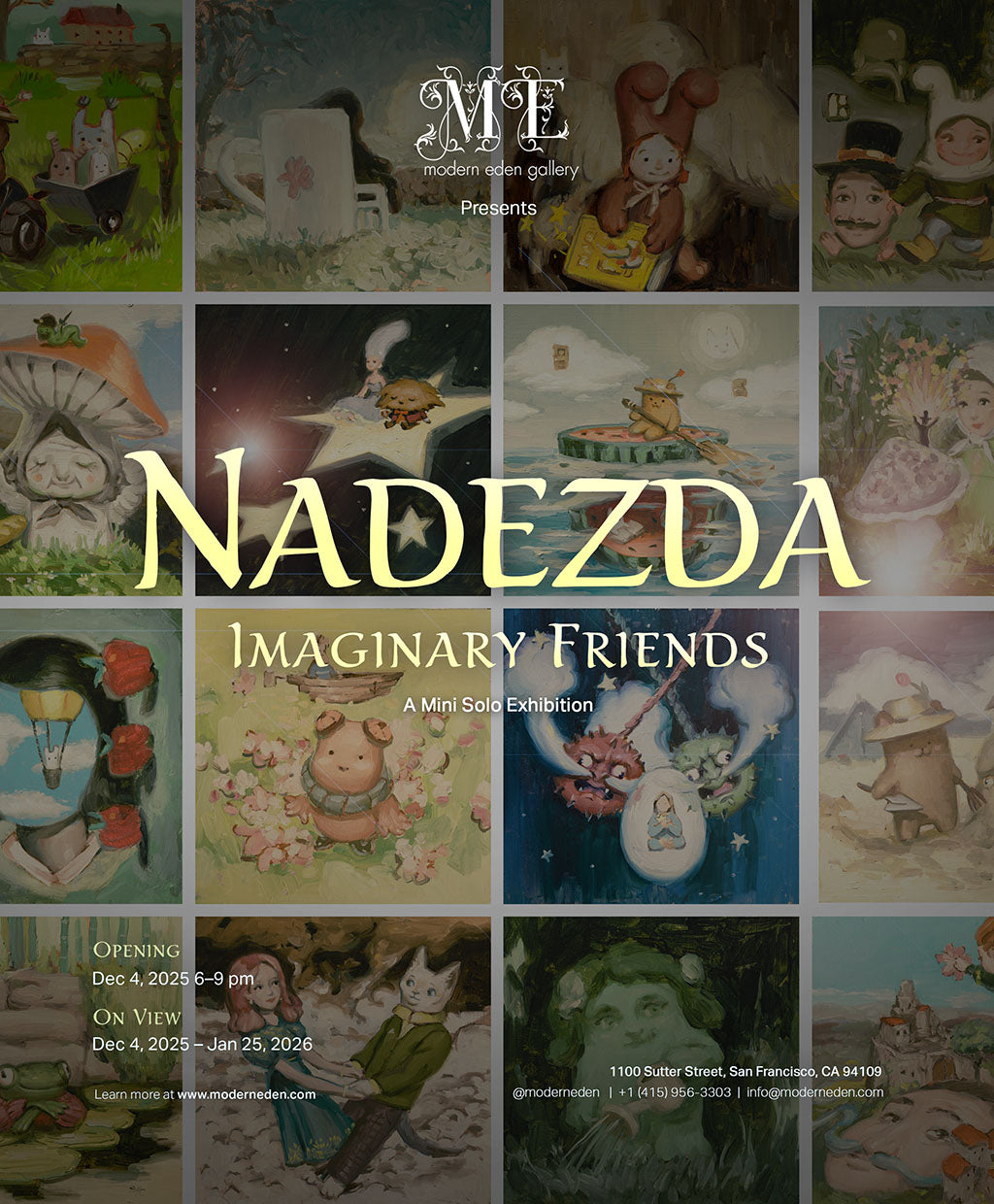
Nadezda: Imaginary Friends
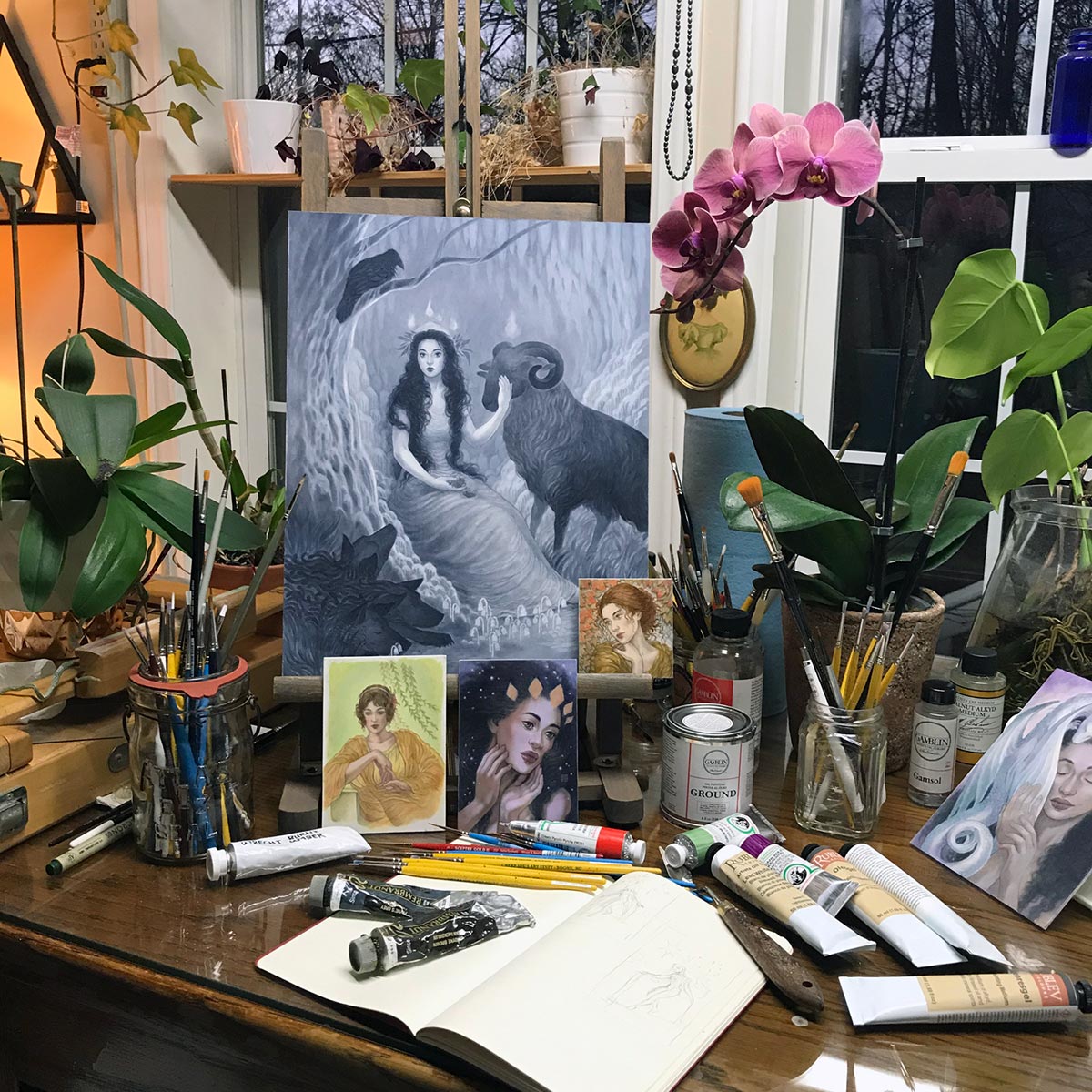
November 14, 2020 6 min read
Kaysha Siemens is a Canadian artist who now resides near Asheville, North Carolina. She works primarily in oil and graphite. Her current ongoing project is Mnemosyne, inspired by Greek myth. In her own words:
“My goal is the object of beauty, but that goal is achieved through engagement in process, and neither aim is worthwhile without meaning and intention. I seek to talk about the ordinary with the language of story, to arrest with exquisite imagery, and ultimately to leave viewers with a feeling, a lingering sense, that they have had a brush with the sublime.”
We are delighted to include Kaysha’s piece Persephone in the Garden of Hades in our Midnight Garden exhibition, curated by Beautiful Bizarre Magazine.
Interview by Waiton Farrell

WF: Hi Kaysha! Your work is stunning. You reference the goddess of memory, Mnemosyne, as an inspiration for your current body of work. Could you expand on how you translate the limitless possibilities of Greek mythology onto your canvas in such a fresh and engaging way?
KS: Hi! And thank you! That’s such a huge question, because it’s a huge task -- you’re completely right to say limitless! I guess the best way to put it is that I don’t try to say everything there is to say. That would be impossible. Instead I approach each piece very much from my own unique angle and perspective. First I research a subject, drawing as much as possible from ancient literary sources only, no modern retellings or summaries. Then I start sketching out ideas, and during this phase I try to avoid looking at other artists’ interpretations of the same subject. This helps me bring as fresh a perspective as I can, though of course there’s no way to remove myself from the 2000+ years of influence Greek and Roman culture have had on the Western world, for good or ill. From the sketch onward, it’s all refinement, reference-sourcing, and the hard but joyful job of painting. It’s always such a pleasure to see which elements will resonate with different viewers, and to compare how my own vision differs from other artists, which details stood out to me compared to another person, and vice-versa. Mythology is both ancient and eternally fresh, because we all bring ourselves to it.

WF: As one of ninety incredible and diverse artists invited by Beautiful Bizarre Magazine to take part in Midnight Garden, how did you get involved with this exhibition?
KS: Danijela at Beautiful Bizarre invited me personally! I can’t possibly overestimate how huge an honor it has been to work with both her and Modern Eden. I hope this is only the first time of very many.

WF: The luminescent effect of the flora in your piece is entrancing, and the female figure’s dress is diaphanous. How did you achieve such a transparent effect - akin to watercolor - while working with oils?
KS: I spent a number of years working in watercolor -- which I struggled with -- before switching (back) to oil. I brought the things I loved about watercolor with me, including working very thinly and in transparent layers. It means a painting can take a very long time to complete, but I love the unique effect.

WF: Though it could be a literal interpretation of the Greek myth of Persephone, your work appears to have meaning which transcends the tales upon which it is based. What is the significance of the symbolism included in this particular scene?
KS: I like to leave the meanings of my work fairly open to viewers, but to me this piece is a self-possessed, self-aware Persephone on the cusp of her queenhood: the pomegranate is present but not yet eaten, the marriage veil is held aloft but not yet worn. There’s impending fate, but also a new world full of possibilities all around her. Most of the details in this painting come directly from mythology, while a few are just for me: Persephone’s black mantle, the trees with veins of living ore, her ghostly servants, and the veil that frames her, are all from a Roman poem called De Raptu Proserpinae. Other elements are found elsewhere in mythology, like the pomegranate, asphodel flowers, poppies, and the comets that are a pair of nymph sisters who committed suicide from grief, and were placed in the heavens by Persephone. The will-o-wisps are an element I like to include in all my Underworld-related paintings, and the ghost pipes in the foreground are a touch just for myself: there was a little patch of them that grew underneath an ancient hemlock at a campground I visited in summers growing up in Canada, and I’ve always loved how strange and mysterious they are, perfect for this piece.
WF: In the current time of extensive safety measures, we can imagine that acquiring models to sit for artists can be challenging. Were you working from a model for Persephone or referencing other materials?
KS: It certainly is, and I was. A mutual on Instagram contacted me out of the blue one day earlier this year, challenging me gently but entirely correctly about the relative lack of people of color in my work. I had already been thinking a lot about how to change this, so I asked her if she’d ever modeled, and if there was a figure or goddess she might ever like to see herself as. It turned out Persephone had been her nickname for years, and at the time I was already planning to tackle Persephone for Midnight Garden, but had not yet found a model. It gave me chills, it was so obviously meant to be! We made things work with some creative use of photographs, but I would love to work with her again in person -- hopefully not too far in the future. The other reference-heavy things were the flowers, which I painted based on the work of @cpburrowsphoto on Instagram, who photographs plants in UV spectrum. It’s amazing how plants glow in UV light, and how different various pigments look. Even long before I began my mythology paintings, I remember finding his work and thinking how perfect the glowing floral palette would be for a Persephone piece, so it’s been the fulfillment of years of imagining.

WF: As you developed into an artist, who inspired you most to pursue this passion?
KS: I’ve always been pretty self-driven. I did well in a lot of subjects in school, which actually made the choice of “career goal” hard, but ultimately it came down to art being the one thing I knew I would -always- do and always love no matter what else I did, so really I may as well give it my all. I haven't regretted it.
If I get into artists who have inspired me, we’ll be here all day, but a few notable names are Howard Pyle (the pen and ink work in his Arthurian legends books was formative for me as a teen), Svetlin Vassilev, and John Singer Sargent (his mythological murals, with flatter and more graphic treatment than his portraiture, are just incredible!). More currently I’ve been lucky to make the acquaintance of fellow contemporary artists Julio Reyes and Jason Mowry, both of whom are incredibly inspiring to me despite being so different. I follow a lot of art jewelers. I also love the work of Miho Hirano, Soey Milk, Leilani Bustamante, and Kristin Kwan! I’m all over the place, haha
WF: Your work captures a variety of styles from realism to the fantastical. As you build your body of work, what experiments do you implement to challenge your creativity and create the layers that draw the viewer into the realms of your imagination?
KS: I like to give myself a small new challenge with each piece, whether that’s a subject I’ve never tackled, or a technique I haven’t tried, or feel I still need to master. I like the exercise of realism, but I like my work to feel a step or two removed from strict direct observation, to have a sense of otherness and unreality. I combine both realistic and more graphic/illustrative approaches. Sometimes I use a model, sometimes I don’t. It just depends on the feeling I’m going for. Currently I’m taking an online course in indirect portraiture from life, which uses a lot of techniques I’ve taught myself but never been actually trained in. I’m looking forward to seeing what effect it may have on my work moving forward.

WF: Now is a time when art is a vehicle for so much more than increasing a collector’s treasure trove. As our nation is thrust into a future we all hope will be brighter, how has your art contributed to your perspective on life and possibilities?
KS: Through the research I do for my ancient subjects, my art helps give me a “long game” perspective on life and the world, and the cycles of history. Meanwhile my profession as a living working artist gives me a viscerally immediate perspective on current events. As a self-employed American and as a woman, the decisions my government makes about health care and women’s rights, for example, are crucial (and stressful!) to me. As goddess of spring and rebirth, Persephone herself is a symbol of renewal. I already had plans to paint her before 2020 even rolled around, but now she has definitely become a symbol and a sort of talisman of my own hopes for myself and my country. I think I might need to paint her a few more times!
Comments will be approved before showing up.
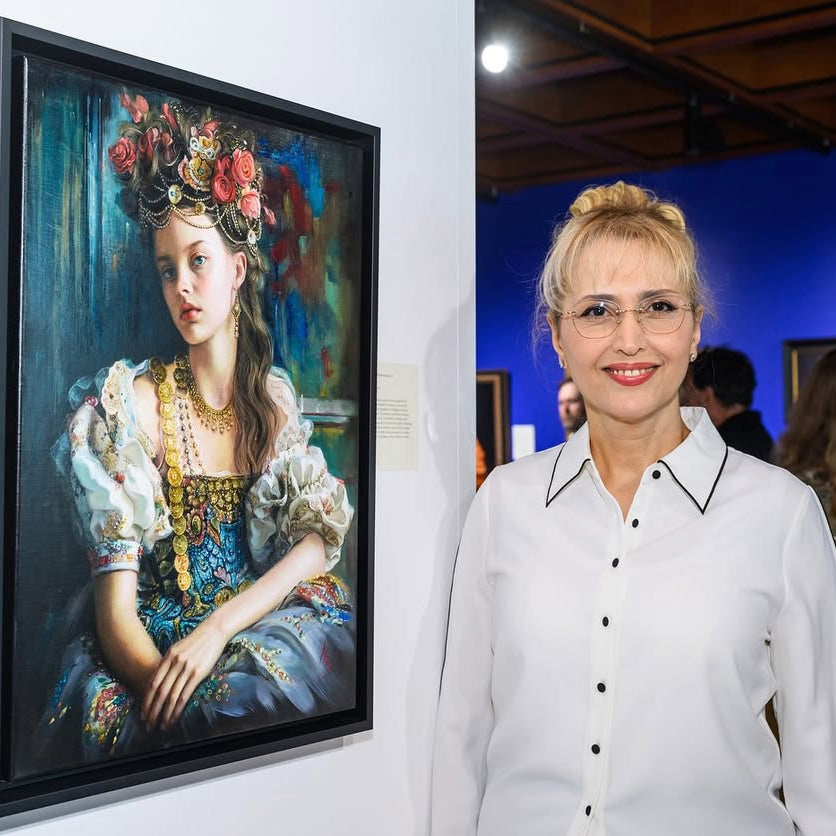
October 15, 2025 4 min read
In this interview, Alexandra Manukyan reflects on the dualities that define her practice: the weight of human grief carried through the female body, the interplay between concealment and truth, and the evolving tension between timeless tradition and our rapidly shifting digital age. What emerges is a portrait of an artist who paints not just figures, but the human condition itself—layered, vulnerable, and endlessly resilient.
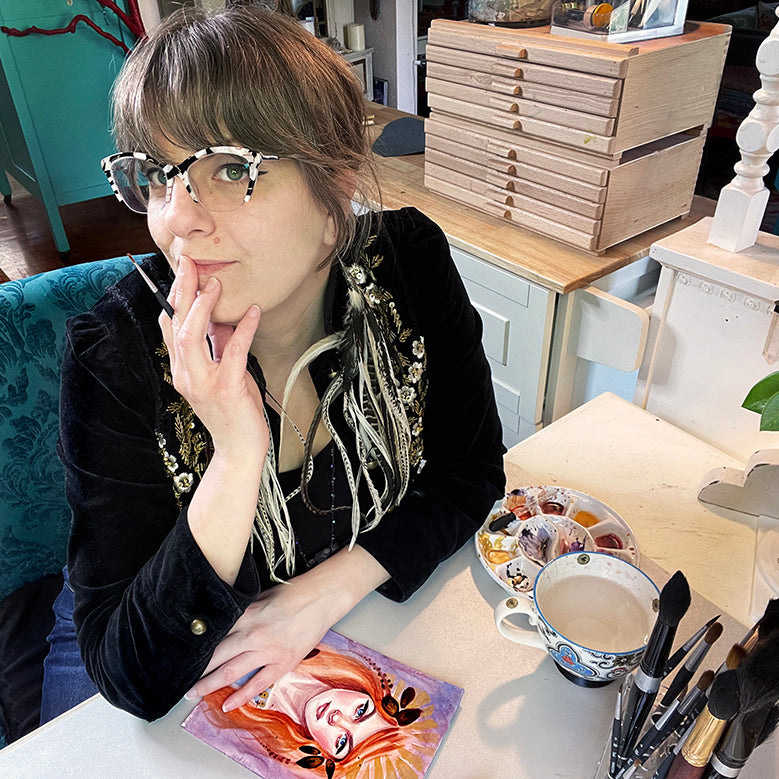
July 14, 2022 7 min read
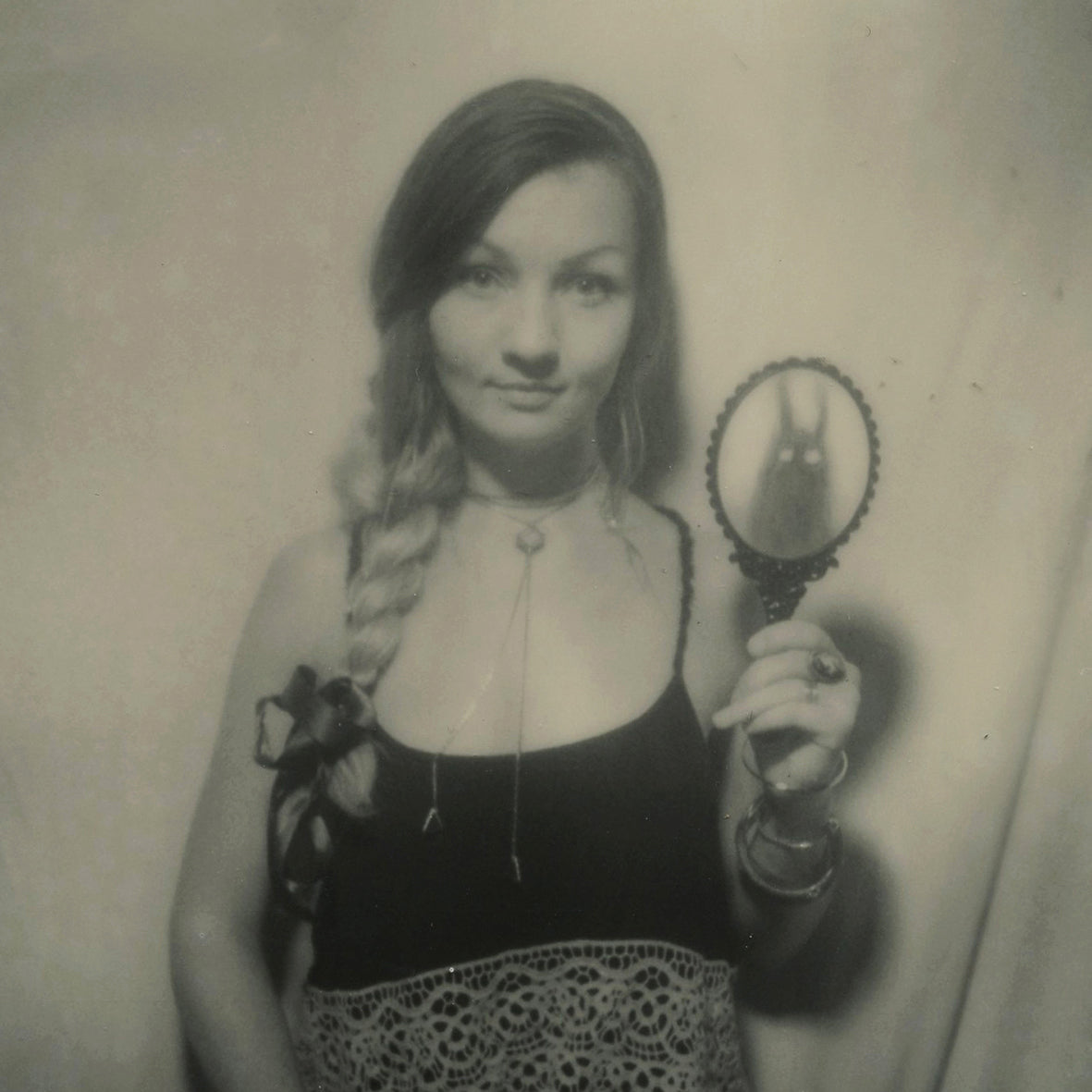
July 01, 2022 7 min read